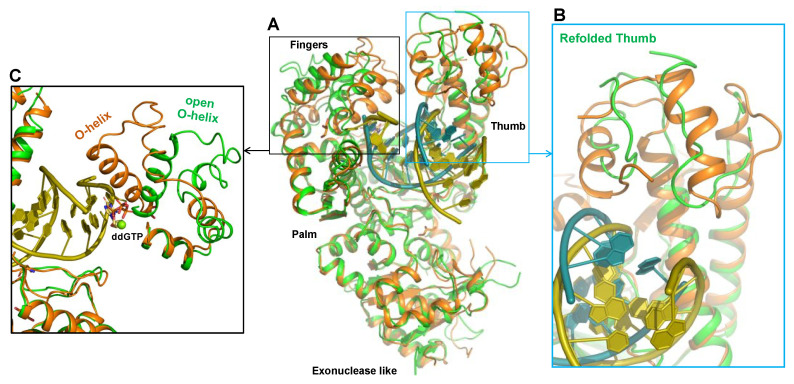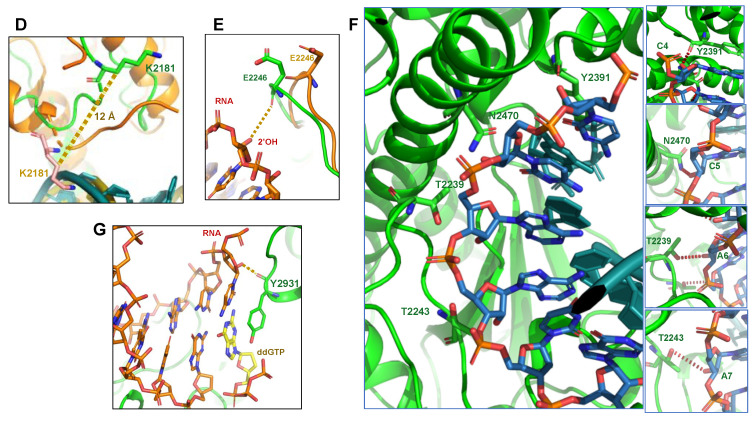Figure 6.
Structure of the Polθ-pol:DNA/RNA:ddGTP ternary complex. (A) Overlap of the structures of Polθ-pol:DNA/RNA:ddGTP (green) and Polθ-pol:DNA/DNA:ddGTP (orange, PDB: 4 × 0 q). The fingers and thumb domains (boxed in black and blue) differ in the two structures. (B) The thumb domain of Polθ-pol in the DNA/DNA has typical α-helix folding (orange), but the helices of the thumb of Polθ-pol in complex with DNA/RNA is partially re-folded to loops (green). (C) The O-helix of the fingers of Polθ-pol in complex with DNA/DNA has a closed state (orange), but the fingers of Polθ-pol in complex with DNA/RNA have an open state (in green). (D) The conformational shift of K2181 of the thumb domain between the closed Polθ-pol:DNA/DNA and the open Polθ-pol:DNA/RNA structures. (E) In the Polθ-pol:DNA/RNA structure, E2246 forms a hydrogen bond with the 2′-OH of the RNA template. (F) Additional hydrogen bond interactions between 2′-OH groups of the RNA template and Polθ-pol residues. Zoomed-in images of these bonding interactions are shown on the left. (G) The main-chain carbonyl of Y2931 in Polθ-pol forms a hydrogen bond with the 2′-OH of the template ribonucleotide that pairs with the incoming ddGTP site in the active.


